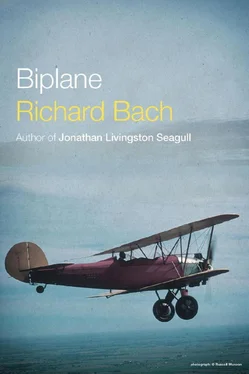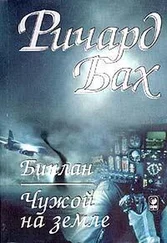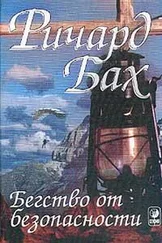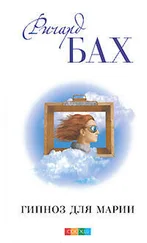Ричард Бах - Biplane
Здесь есть возможность читать онлайн «Ричард Бах - Biplane» весь текст электронной книги совершенно бесплатно (целиком полную версию без сокращений). В некоторых случаях можно слушать аудио, скачать через торрент в формате fb2 и присутствует краткое содержание. Город: New York, Год выпуска: 2012, ISBN: 2012, Издательство: Scribner, Жанр: Современная проза, на английском языке. Описание произведения, (предисловие) а так же отзывы посетителей доступны на портале библиотеки ЛибКат.
- Название:Biplane
- Автор:
- Издательство:Scribner
- Жанр:
- Год:2012
- Город:New York
- ISBN:978-1-4516-9744-5
- Рейтинг книги:3 / 5. Голосов: 1
-
Избранное:Добавить в избранное
- Отзывы:
-
Ваша оценка:
- 60
- 1
- 2
- 3
- 4
- 5
Biplane: краткое содержание, описание и аннотация
Предлагаем к чтению аннотацию, описание, краткое содержание или предисловие (зависит от того, что написал сам автор книги «Biplane»). Если вы не нашли необходимую информацию о книге — напишите в комментариях, мы постараемся отыскать её.
Biplane — читать онлайн бесплатно полную книгу (весь текст) целиком
Ниже представлен текст книги, разбитый по страницам. Система сохранения места последней прочитанной страницы, позволяет с удобством читать онлайн бесплатно книгу «Biplane», без необходимости каждый раз заново искать на чём Вы остановились. Поставьте закладку, и сможете в любой момент перейти на страницу, на которой закончили чтение.
Интервал:
Закладка:
The sound dies away for a moment. He leans toward me, and I toward him, to hear his words.
“Looks good. You ready?”
I nod. I am ready. We might as well get it over with. He had said it would be fun, and had said the words with the strange soft tone he used, belying his smile, when he truly meant his words. For that meaning I had come, had left a comfortable bed at five in the morning to tramp through wet grass and cold wind. Let’s get it over with and trouble me no more with your flying.
The lever is again forward, the noise again unbearable, but this time the brakes are loosed, and the little airplane, the Luscombe, surges ahead. It carries us along, down the fairway.
Into the sky.
It really happened. We were rolling, following the magic spinning brightflashing blade, and suddenly we were rolling no more.
A million planes I had seen flying. A million planes, and was unimpressed. Now it was I, and that green dwindling beneath the wheels, that was the ground. Separating me from the green grass and quiet ground? Air. Thin, unseen, blowable, breathable air. Air is nothing. And between us and the ground: a thousand feet of nothing.
The noise? A little hum.
There! The sun! Housetops aglint, and chimney smoke rising!
The metal? Wonderful metal.
Look! The horizon! I can see beyond the horizon! I can see to the end of the world!
We fly! By God, we fly!
My friend watches me and he is smiling.
* * *
The wind stirs the flap of my sleeping bag and the sun is already above the horizon. It is 6:15 and time to get up and get moving. The wind is not just cool; the wind is cold. Cold! And I thought spring in the South was a languid time of liquid warm from dawn to dawn. Into the chilled flight suit and pull on the frozen boots and the icy leather jacket. The airport is flat and closed about me and the runway lights are still on. Breakfast at the next stop, then, and time now to get the engine started and warming. One must always let the old engines warm themselves well before flight. They need ten minutes running on the ground to get the cold out of their oil and life into their controls.
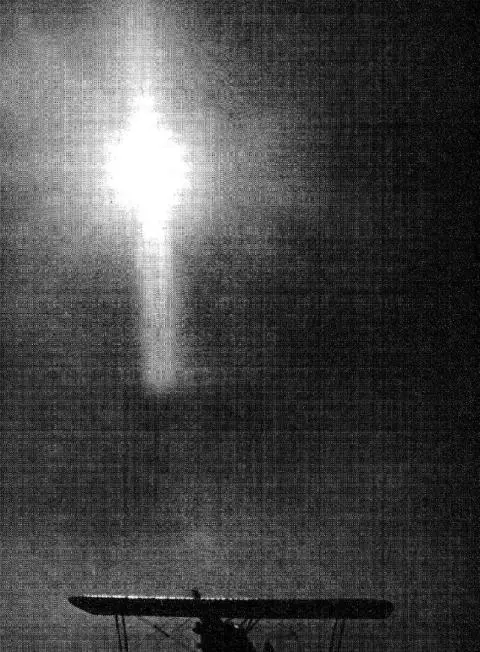
Despite the cold, engine start is a beautiful time of day. The routine: pull the propeller through five times, fuel valve on, mixture rich, seven shots of priming fuel, pull the prop through two more times, magneto switch on, pump the throttle, crank the inertia starter, run back to the cockpit, engage the starter and swallow exhaust and engine thunder unfiltered and loud and frozen sharp, shattering again the silence of a little airport.
How many times have I started an airplane engine, even in the few years that I have been flying? In how many airplanes? So many different ways, so many different sounds, but beneath them all the same river; they are symbols of one meaning.
“Clear!”
Pull the starter knob to send the propeller into a faltering blurred arc. Press the primer knob. And from the exhaust stacks a cloud of blue and a storm of sound. Inspect the cloud under a microscope and you would find tiny drops of oil unburned. Inspect the sound on an oscilloscope and trace a quickchanging world of harsh pointed lines under the reference grid. In neither instrument can the essence of engine start be caught. That essence is unseen, in the thought of the one who controls the bank of switches that bid an engine to life. Get the prop turning, check the oil pressure, let the engine warm up. About 900 rpm for a minute or two. Forward on the throttle until the wheels begin to roll. Taxi to the waiting runway.
How many times in the history of flight has the routine been followed? From the earliest days, when engine start was the signal for ground crew to throw themselves on the stabilizer, holding a brakeless airplane until the wave of the pilot’s hand. Through the days in the sun of war when engine start was the crashing roaring climax to “Run One. mesh One. ” and the steepfalling whine of the inertia starter. To the days when now and then along the line of the crew’s checklist there is the softest of purring rumbles, and the only visible sign of an engine alive is the quick-rising needle of the tailpipe temperature gage, and the first ripples of heat drifting back from smooth-cowled turbines;
But for every one, for every single one, engine start is journey start. If you would seek some of the romance of flight, watch when the engines first begin to turn. Pick any place in aviation history, in any kind of airplane, and there is a shard or a massive block of romance, of glory and glamour. The pilot, in the cockpit, readies himself and his airplane. In scores of languages, in a hundred different terms, there comes the moment when one word or one sign means: Go.
“C LEAR!”
“C ONTACT! “.
“. mesh One.”
“. OK. Start One.”
“Clear left.”
“Lightoff.”
A green flare in the sky.
A flight leader’s finger, drawing a quick circle in the air.
“P ILOTS. S TART YOUR ENGINES.”
“Hit it.”
“Let’s go.”
Great black massive propellers slam suddenly around. External power carts stagger and nearly die under instant load of high amperage. The explosion of shotgun starters. Hiss and ground-shaking concussion of compressed-air starters. Rattle and clatter and labored moan of hand-cranked inertia flywheels. The snap and clack of impulse magnetos. Roar of external air to the air-driven turbine starters. Slow soft acceleration of squaretipped turboprop blades.
From stillness into motion. From death into life. From silence into rising thunder. And each a part of the journey, for every man in every cockpit.
There is sound and glory, blue smoke and thunder, for anyone who wishes. Descendants of pioneers need not mourn the passing of an untouched frontier; it waits quiet above their heads. Little difference makes the look of the machine that becomes soon a part of the pioneer. He can be on flight orders, with a military commission signed by the president of the nation, riding forty thousand pounds of thrust at twice the speed of sound, protected by inch-thick glass and an artificial atmosphere within his cockpit. Despite the restrictions of the military, he has still his taste of freedom, his sight of the sky. Or he can be on the orders of desire and conscience alone, with an airplane bought instead of a second automobile, traveling a hundred miles per hour and protected from the wind by an eighth inch of plexiglass or by a leather helmet and a pair of goggles.
The journey has been traveled tens of thousands of times, a trail blazed by Montgolfier and Montgomery and Wright, hewn and cleared by Lincoln Beachy and Glenn Curtiss and Earle Ovington and Jack Knight, paved and smoothed and widened by every man that guided an airplane away from the earth or who spent an hour in the dream of flight. Yet, in the billions of hours that men have been aloft, not one has left a mark in the sky. Into the smooth sky we pull a tiny wake of rippled air. When our airplane is gone, the sky smooths, carefully covering every sign of our passing, and becomes the quiet wilderness that it has always been.
So call the clear! and starter engaged. Breathe blue smoke and set the wheels to rolling. Oil pressure and temperature and valve the fuel and set the flaps for takeoff. Set propeller revolutions to tremble at the redline, submerge in a sea of sound and bright glory. And go the way along the path, take up the journey in solitude.
* * *
Today our task is to cross the land in giant steps, to move as far as we can westward before the sun again wins its race.
A quick engine runup, feeling again the goodness of being a long way from home and having an engine check out precisely as it should.
Читать дальшеИнтервал:
Закладка:
Похожие книги на «Biplane»
Представляем Вашему вниманию похожие книги на «Biplane» списком для выбора. Мы отобрали схожую по названию и смыслу литературу в надежде предоставить читателям больше вариантов отыскать новые, интересные, ещё непрочитанные произведения.
Обсуждение, отзывы о книге «Biplane» и просто собственные мнения читателей. Оставьте ваши комментарии, напишите, что Вы думаете о произведении, его смысле или главных героях. Укажите что конкретно понравилось, а что нет, и почему Вы так считаете.
